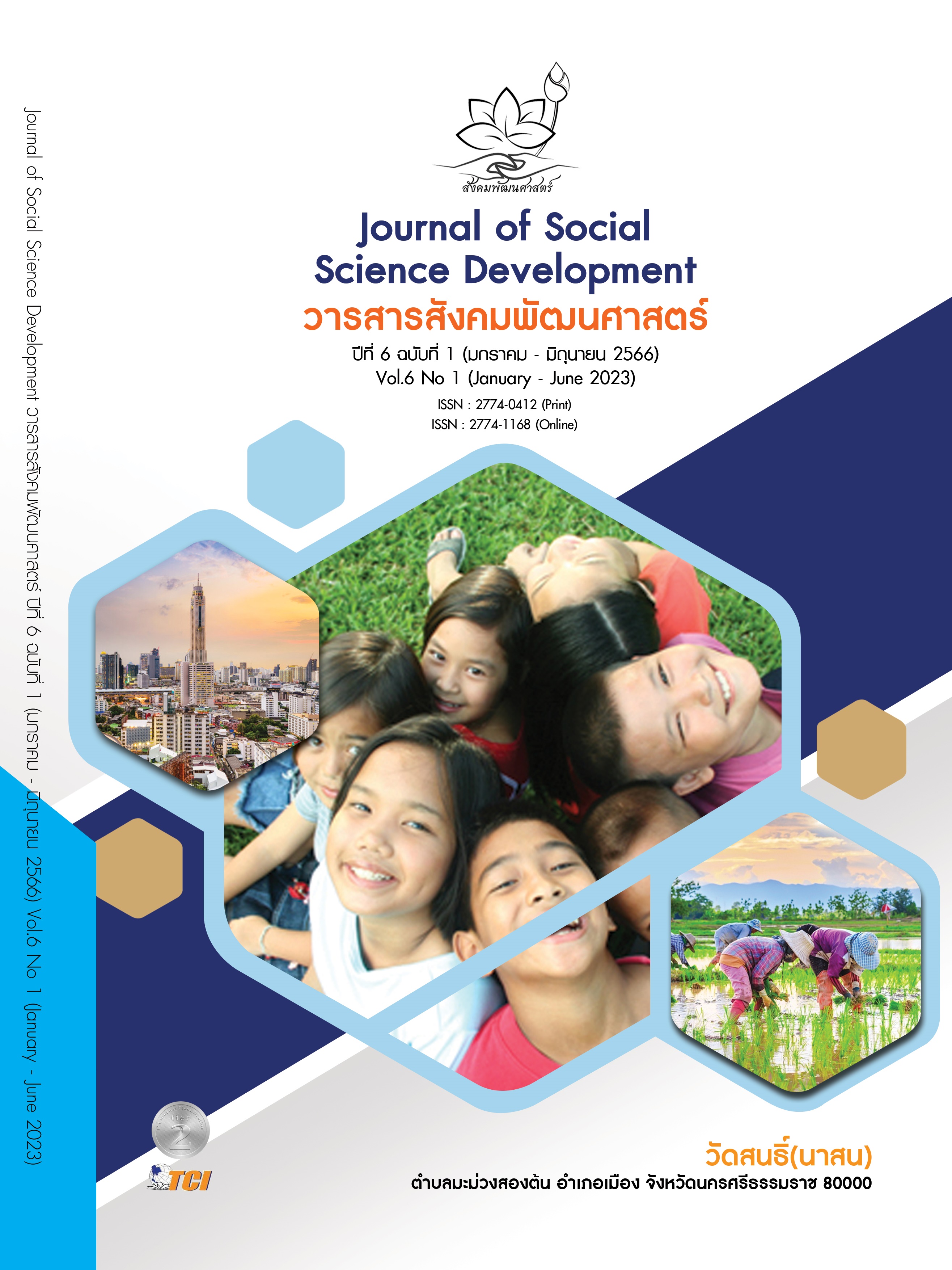REDUCED SCHOOL TIME PROJECT ASSESSMENT REPORT INCREASE KNOWLEDGE TIME WAT SAWANG AROM SCHOOL PRANAKHON SRI AYUTTHAYA PRIMARY EDUCATION AREA OFFICE, PRANAKHON SRI AYUTTHAYA DISTRICT 1
Main Article Content
Abstract
The objectives of this study were : 1) to assess the context based on the level of demand indicators required for the preparation of the project and the feasibility level of the project, 2) to evaluate inputs based on the indicators of the level of suitability of the curriculum and the level of suitability of personnel, 3) to evaluate the process according to the indicators of the percentage of activities carried out and the percentage of supervision to monitor the project, and 4) to evaluate the output according to the indicators of 4 H skills, 21 century skills, and the satisfaction of those involved. This study is an approximative study using the CIPP Model assessment model. The population consists of 110 students in grades 4 – 3, 18 teachers and educational personnel, 7 members of the Basic Education Committee, 110 parents of students, and personnel of establishments. 20 personnel, 20 educational personnel, and consumers. A total of 20 people, including 305 people, were selected specifically. Data analysis with basic statistics is percentage (%), Average (μ), standard deviation (ơ), and alpha coefficient of Kronbach. The tool includes a 5-level estimation scale questionnaire with a confidence level of 0.95. The results of the study showed that: 1) context; Highest score (μ = 4.50), 2) Inputs Most rated (μ = 4.54), 3) Process, and 4) high score in productivity (μ = 4.23). In summary, the project evaluation results showed that all assessment criteria were passed and when considering the indicators, it was found that all 16 assessment criteria were passed at the highest level of 9 indicators and at the highest level of 7 indicators.
Article Details

This work is licensed under a Creative Commons Attribution-NonCommercial-NoDerivatives 4.0 International License.
References
กระทรวงศึกษาธิการ. (2546). พระราชบัญญัติการศึกษาแห่งชาติ พ.ศ.2542 และที่แก้ไขเพิ่มเติม (ฉบับที่ 2) พ.ศ.2545. กรุงเทพมหานคร: องค์การรับส่งสินค้าและพัสดุภัณฑ์. (ร.ส.พ.).
จิตรา สุขเจริญ. (2555). ปัจจัยที่ส่งผลต่อความเครียดและการเผชิญความเครียดของนักศึกษา พยาบาล วิทยาลัยพยาบาลพระบรมราชชนนี ชลบุรี. ใน วิทยานิพนธ์วิทยาศาสตรมหาบัณฑิต วิทยาลัยพยาบาลพระบรมราชชนนี ชลบุรี. สถาบันพระบรมราชชนก กระทรวงสาธารณสุข.
ธีรศักดิ์ อุ่นอารมณ์เลิศ. (2556). เครื่องมือวิจัยทางการศึกษา : การสร้างและการพัฒนา. นครปฐม: มหาวิทยาลัยศิลปากร.
รัตนะ บัวสนธ์. (2556). “รูปแบบการประเมิน CIPP และ CIPPIEST มโนทัศน์ที่คลาดเคลื่อนและถูกต้องในการใช้,”. วารสารศิลปากรศึกษาศาสตร์วิจัย, 5(2), 2-9.
สมคิด พรมจุ้ย. (2552). เทคนิคการประเมินโครงการ. (พิมพ์ครั้งที่ 6). กรุงเทพมหานคร: จตุพรดีไซน์.
สมหวัง พิธิยานุวัฒน์. (2559). วิธีวิทยาการประเมินศาสตร์แห่งคุณค่า. (พิมพ์ครั้งที่ 6). กรุงเทพมหานคร: สำนักพิมพ์แห่งจุฬาลงกรณ์มหาวิทยาลัย.
สันติ บุญภิรมย์. (2557). การวิจัยทางการศึกษาและการวิจัยทางการบริหารการศึกษา. กรุงเทพมหานคร : ทริปเพิ้ล เอ็ดดูเคชั่น กรุ๊ป.
สำนักงานเลขาธิการสภาการศึกษา. (2560). แผนการศึกษาแห่งชาติ พ.ศ. 2560–2579. กรุงเทพมหานคร: พริกหวานกราฟฟิค จำกัด.
สำนักวิชาการและมาตรฐานการศึกษา สำนักงานคณะกรรมการการศึกษาขั้นพื้นฐาน. (2558). แนวปฏิบัติการวัดและประเมินผลการเรียนรู้ตามหลักสูตรแกนกลางการศึกษาขั้นพื้นฐานพุทธศักราช 2551. (พิมพ์ครั้งที่ 4). กรุงเทพมหานคร: โรงพิมพ์ชุมนุมสหกรณ์การเกษตรแห่งประเทศไทย จำกัด.
สุรศักดิ์ ฉายขุนทศ. (2560). ยุทธศาสตร์การนำนโยบายลดเวลาเรียนเพิ่มเวลารู้ไปสู่การปฏิบัติในโรงเรียนขนาดเล็ก สังกัดสำนักงานเขตพื้นที่การศึกษาประถมศึกษานครราชสีมา. ใน ดุษฎีนิพนธ์ปรัชญาดุษฎีบัณฑิต สาขาการบริหารการศึกษาบัณฑิตวิทยาลัย . มหาวิทยาลัยราชภัฎนครราชสีมา.
Stufflebeam, D. L. & Coryn, C. L. S. (2014). Evaluation theory, models & applications. San Francisco, CA: Jossey-Bass.


